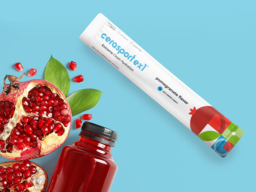Ceralyte 90 | (50g Packet) Severe Dehydration Powder
Ceralyte professional staff et al helped me find the right Ceralyte product to bring me back from a very severe bout off dehydration. I was able to avoid the emergency room as the Ceralyte seemed to be able to reach the affected organs in an incredibly short amount of time. I am not recommending nor did Ceralyte recommend that a person in need of emergency care avoid doing what they need to do for themselves but for me it was a life saver.
This in honestly one of the best products that I have ever used. Specifically, I have run across the State of Georgia Solo in the month of May, and this is what kept my hydration in check for the entire 260 miles. I have used it in many multi-day races and I have been incredibly happy with it. CeraSport is the best. Oh, and the Orange flavor is delicious.
Good for the gut and super refreshing



